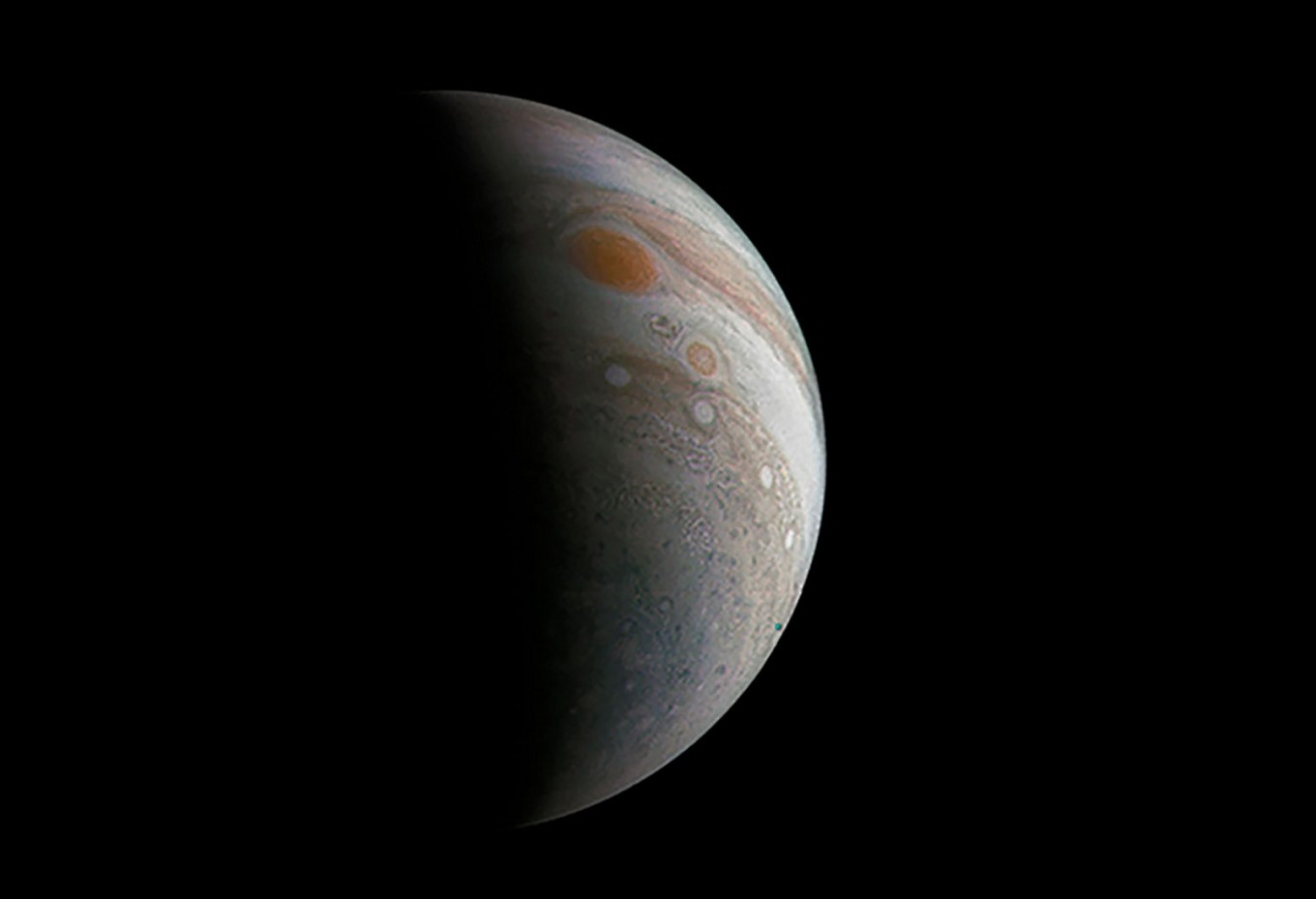Popular Reads
Top Results
Can't find what you're looking for?
View all search resultsPopular Reads
Top Results
Can't find what you're looking for?
View all search resultsNASA spacecraft to fly over Jupiter's Great Red Spot
Change text size
Gift Premium Articles
to Anyone
 This file photo shows a NASA image obtained January 17, 2017, of a crescent Jupiter and the Great Red Spot created by a citizen scientist (Roman Tkachenko) using data from Juno's JunoCam instrument, taken on December 11, 2016 at 2:30 p.m. PST (5:30 p.m. EST), as the Juno spacecraft performed its third close flyby of Jupiter. (NASA/AFP/File)
This file photo shows a NASA image obtained January 17, 2017, of a crescent Jupiter and the Great Red Spot created by a citizen scientist (Roman Tkachenko) using data from Juno's JunoCam instrument, taken on December 11, 2016 at 2:30 p.m. PST (5:30 p.m. EST), as the Juno spacecraft performed its third close flyby of Jupiter. (NASA/AFP/File)
A
n unmanned NASA spacecraft is about to fly over a massive storm raging on Jupiter, in a long-awaited a journey that could shed new light on the forces driving the planet's Great Red Spot.
The flyby of the Juno spacecraft, surveilling the 10,000-mile-wide (16,000-kilometer-wide) storm, is scheduled for 9:55 pm Monday (0155 GMT Tuesday).
"Jupiter's mysterious Great Red Spot is probably the best-known feature of Jupiter," said Scott Bolton, principal investigator of Juno from the Southwest Research Institute in San Antonio.
"This monumental storm has raged on the solar system's biggest planet for centuries."
The storm looks like a churning red knot on the planet's surface. It has been monitored since 1830, and may have existed for more than 350 years, the US space agency said.
Read also: NASA's Juno probe forces 'rethink' on Jupiter
Juno, which earlier this month marked its first year in orbit of the gas giant, will offer "humanity's first up-close and personal view of the gigantic feature," NASA said in a statement.
Equipped with instruments that can penetrate clouds to measure how deep the roots of this storm go, scientists hope to learn more about the workings of the raging tempest.
All eight of Juno's instruments, including its camera, will be on when the spacecraft passes about 5,600 miles (9,000 kilometers) above the Giant Red Spot clouds, NASA said.
Juno launched from Cape Canaveral, Florida in August, 2011, on a mission to learn more about Jupiter's origins, structure, atmosphere and magnetosphere.










